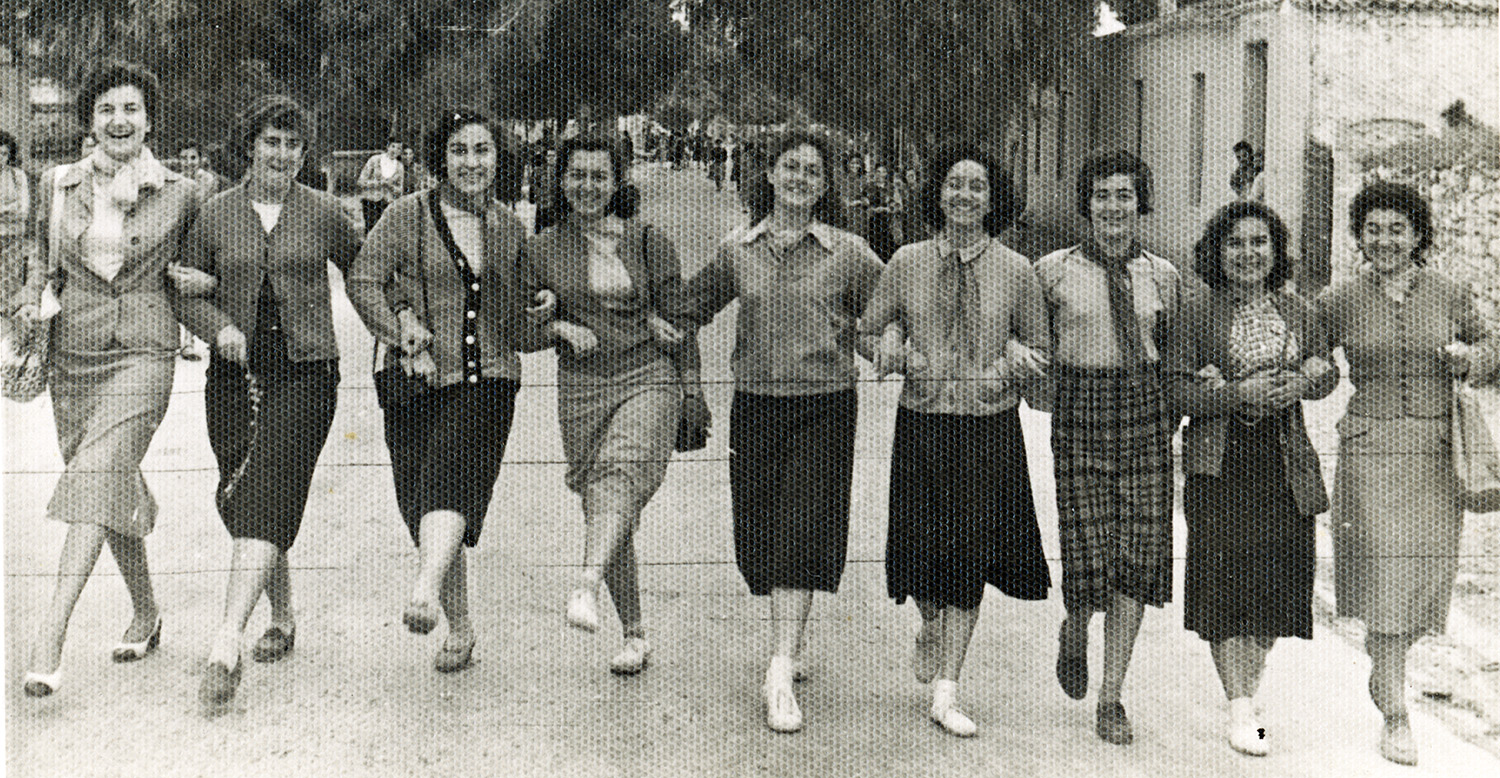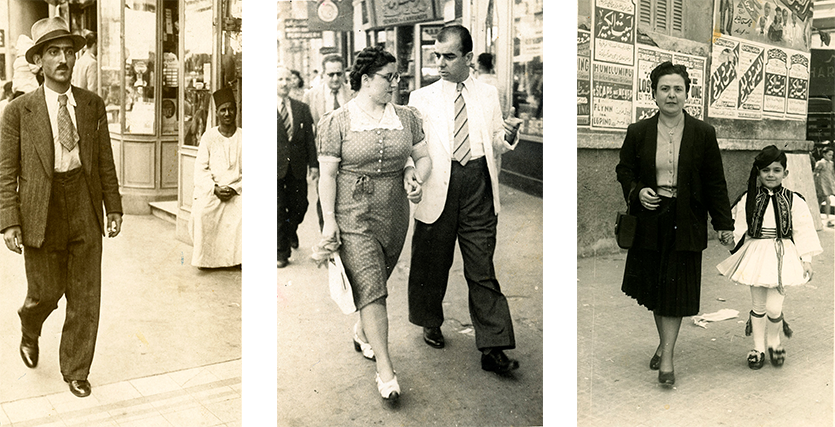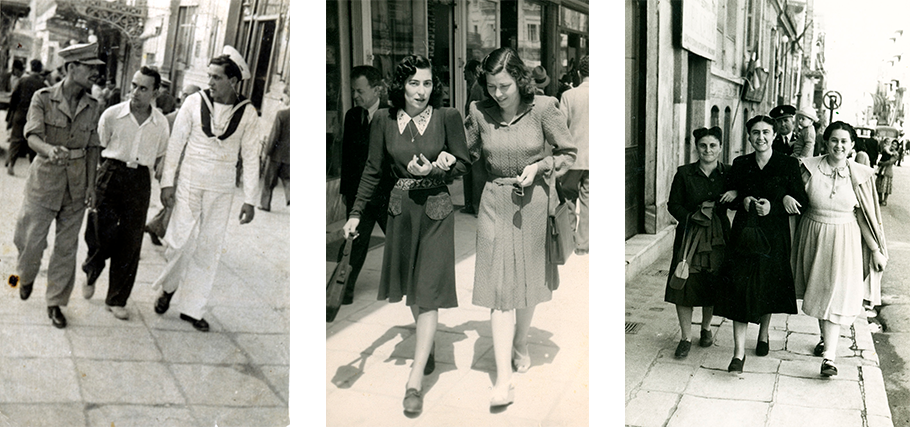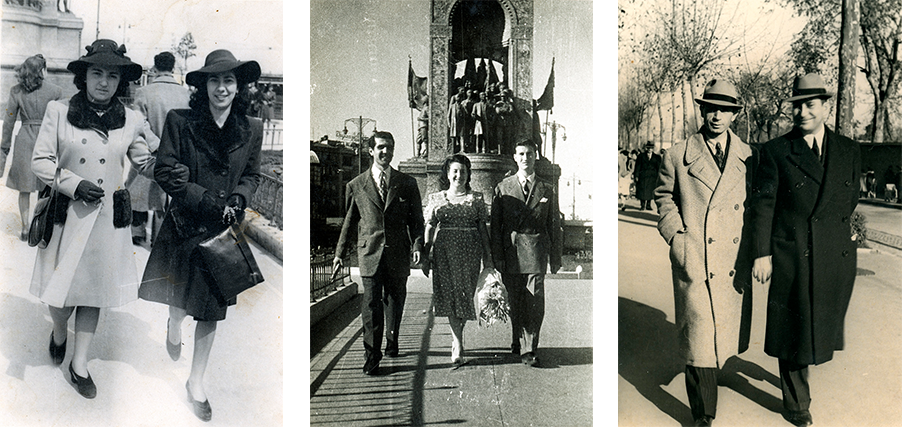
A group of Greek ladies walking together in Koropi, Greece, April 1952
As I examined images in my collection, I discovered a trend in amateur photography that baffled me for years before I was able to crack the mystery behind it. I first came across this phenomenon as I examined pictures of Greeks living in Alexandria, Egypt, in which the subjects were captured walking on the street alone, with friends, or with family, most of the time unaware that they were being photographed. My initial thought was that the shots were taken by a photographer experimenting with street photography. After looking at the postcard size photos in more detail, I noticed that many had written messages on the back in Greek, and some also showed the stamp of photo studios in Alexandria, mostly Greek-owned. I estimated that the B&W photos had been taken between the 1930s and 1950s.

Greeks in walking pictures, Alexandria, Egypt. Circa 1940s, 50s
As I dug deeper, I found a website dedicated to “walking pictures” which finally gave some more convincing answers to my quest. According to “Go Home on a Postcard, The Story of Walking Pictures,” capturing subjects walking in the streets was a worldwide phenomenon which began shortly after WWI and continued until the 1960s, and in a few places the 1970s. Studio photographers roamed tourist destinations and popular pedestrian promenades taking snapshots of people walking alone or in groups. They then handed the subjects a ticket with a number and an address where they could purchase the souvenir print. Those who did end up purchasing the postcard-size prints mailed them to friends and family with a written note on the back.

Greeks in walking pictures, Greece. Circa 1940s, 50s
The trend became particularly popular in the U.S. in the 1930 during the Great Depression. As people could no longer afford formal studio portraits, they chose the “walking picture” alternative for a fraction of the cost. Photo studios responded to the public’s demand for these low budget portraits by sending their photographers to the street to drum up business. The trend continued during World War II near military training camps in the U.S., particularly in places like San Diego, home for a large naval base and Fort Bragg in North Carolina, a major army training. It was easy and cheap for military personnel to procure a “walking photo” in uniform to send home to loved ones before being sent abroad.

Greeks in walking pictures, Constantinople or Istanbul, Turkey. Circa 1940s, 50s
As a collector of photography, I’m always intrigued when I come across a feature in historical images that I hadn’t previously encountered. What began as a hunch about random images of people walking in the street was formalized as a trend in photography during a period in history that coincided with an economic downturn. While it is true that photography has lost much of its prestige with the technological advances of the 21st century, its value in terms of historical documentation is still uncontested.

Fascinating dive into “Greeks in Walking Pictures: Uncovering a Trend in Historical Photographs”!
It’s incredible how visuals capture not just moments but the cultural trends of an era. These walking pictures offer a unique glimpse into the daily lives of Greeks, revealing stories that transcend time. These pictures connect us to the rich tapestry of our past.